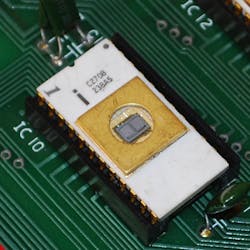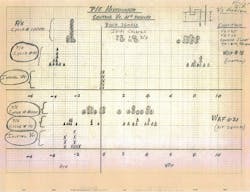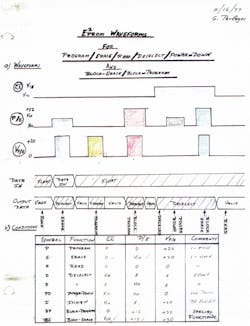George Perlegos Receives Flash Memory Summit Lifetime Achievement Award
These days we have terabyte flash storage devices built using the latest 3D stacks of quadruple level cell (QLC) NAND flash technologies. It is a far cry from the early EPROMs that measured capacity in bits instead of gigabits and terabits, but those chips are what helped build the electronics industry into what it is today.
It took a lot of people, discoveries, and engineering to make it to this date. One of the people who developed those early technologies was George Perlegos. He recently received the Flash Memory Summit’s Lifetime Achievement Award for his many innovations in memory technology.
George Perlegos received the Flash Memory Summit’s Lifetime Achievement Award for his many innovations in memory technology.
One of his first projects was the design of the Intel 2708 N-MOS EPROM. This 8 Kbit device was programmed electrically and erased completely using ultraviolet light, which is why it has a clear cover over the die. It was key to the success of microprocessors at the time, like the Intel 8008 and 8085, because these had no on-chip non-volatile memory unlike today’s microcontrollers.
The Intel 2709 N-MOS EPROM was programmed electrically and erased using ultraviolet light.
The prior Intel 1702, developed in 1970 by Dov Frohman, used a P-MOS floating (unconnected) gate structure. Perlegos developed the Intel 2708 N-MOS EPROM in 1974 using a new process that used channel injection and a single dual-layer polysilicon cell to create a dense, fast-access non-volatile memory.
These early EPROMS required three different voltages to operate (-5V, +5V, and +12V). This required more sophisticated power supplies. In 1976, Perlegos exploited a self-aligned polysilicon gate structure and ion implantation in the channel to enhance channel injection, enabling single 5 V operation to match that of the other system components. The result was the 16 Kbit Intel 2716. It allowed battery-powered solutions.
His next project, in 1978, was the Intel 2816 16-Kbit EEPROM. It had single-byte erasure along with 10,000 erase/write cycles versus the bulk erase needed with other chips.
This shows the target specification for the Intel 2816.
Perlegos moved to SEEQ Technologies and in 1981created EEPROMs that were 5 V-only for erase and normal operation. Like the 5 V UV-EPROM, the 5 V EEPROM simplified system design. Many are still in use today.
He was the founder of Atmel where, in 1988, he developed a 5-V-only NOR flash memory. This allowed in-system programming and the chips were less expensive than EEPROMS. He used proven tunneling erase/program technology that allowed large blocks to be erased at once.
Perlegos also worked on Atmel’s 89C51, the first flash-based microcontroller. It was compatible with the Intel 8051. This was followed up by the 8-bit Atmel AVR that has grown in popularity. The original Arduino was based on an Atmel AVR microcontroller.
He was looking forward in 2000, seven years before the existence of the smartphone, when he said, “You’ll want your phone to do everything. You’ll want to see a picture on your phone someday and you’ll want to look at the stock market and be able to buy something. And what everyone wants to be able to do is e-commerce, which means images [and security]. As we bring images to phones you’ll need a camera. . . . You’ll be able to scan your finger and it will recognize you and turn your cell phone on. Nobody else [will be able to] open it.” (World Report Silicon Valley, 28, October 28, 2000.) Smartphones with commercially viable fingerprint authentication did not arrive until 2011.






